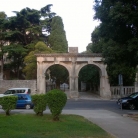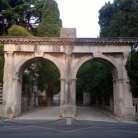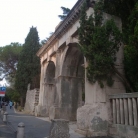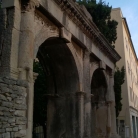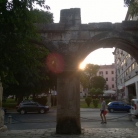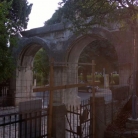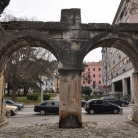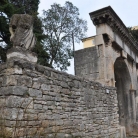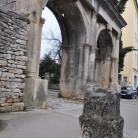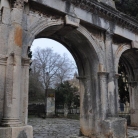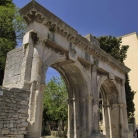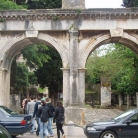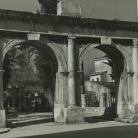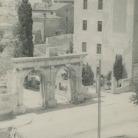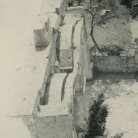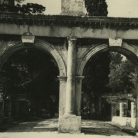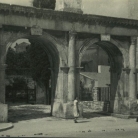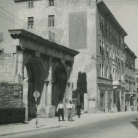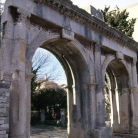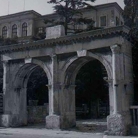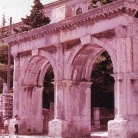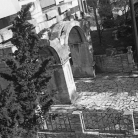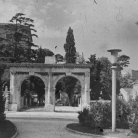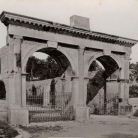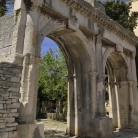The Twin Gate
During its history, Pula was encircled by walls, from the Antiquity until recently, when they were knocked down due to the expansion of the town core. There were about ten gates providing the entrance into the town, of which the Twin Gates and a part of the walls connecting them to Giardin square are still visible today. In the course of the vehement medieval period, and for the purpose of the best possible defence of the town, the gates were buried underground, and only just recently dug out and conserved.
The Twin Gates, also known as Porta Gemina, were named after its two semi-circular openings leading into the town, built in the period from the 2nd until the 3rd cc. on the remains of an earlier town gate. They were decorated by three semi-columns with composite capitals, and the relief wreath above connecting the composition into a harmonious unit. The arches still show the openings used for closing the gate and preventing the unwanted from entering the town.
The Twin Gates also contain the plate with the name of Lucius Menacius Priscus, a town councilman and a senator, who personally funded the construction of one of the town's water supply networks. The plate was not originally the part of the monument. It was found next to it. Pietro Kandler had it built in its upper central part in the late 19th c.
By passing through the gates in front of which the remains of a partially reconstructed octagonal mausoleum from the 2nd or 3rd cc. were found, we reach the present day Archaeological Museum, the Castle and the Small Roman Theatre.
Carrarina 3, HR-52100 Pula-Pola













